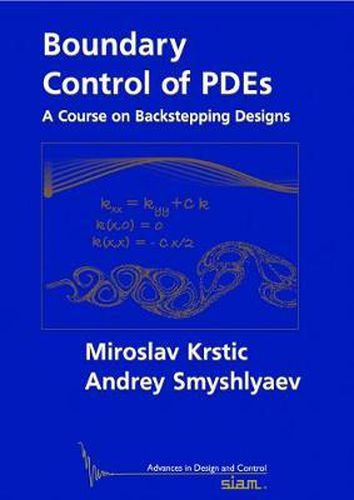Readings Newsletter
Become a Readings Member to make your shopping experience even easier.
Sign in or sign up for free!
You’re not far away from qualifying for FREE standard shipping within Australia
You’ve qualified for FREE standard shipping within Australia
The cart is loading…






This concise and practical textbook presents an introduction to backstepping, an elegant new approach to boundary control of partial differential equations (PDEs). Backstepping provides mathematical tools for constructing coordinate transformations and boundary feedback laws for converting complex and unstable PDE systems into elementary, stable, and physically intuitive ‘target PDE systems’ that are familiar to engineers and physicists. Readers will be introduced to constructive control synthesis and Lyapunov stability analysis for distributed parameter systems. The text’s broad coverage includes parabolic PDEs; hyperbolic PDEs of first and second order; fluid, thermal, and structural systems; delay systems; real-valued as well as complex-valued PDEs; and stabilisation as well as motion planning and trajectory tracking for PDEs. Even an instructor with no expertise in control of PDEs will find it possible to teach effectively from this book, while an expert researcher looking for novel technical challenges will find many topics of interest.
$9.00 standard shipping within Australia
FREE standard shipping within Australia for orders over $100.00
Express & International shipping calculated at checkout
This concise and practical textbook presents an introduction to backstepping, an elegant new approach to boundary control of partial differential equations (PDEs). Backstepping provides mathematical tools for constructing coordinate transformations and boundary feedback laws for converting complex and unstable PDE systems into elementary, stable, and physically intuitive ‘target PDE systems’ that are familiar to engineers and physicists. Readers will be introduced to constructive control synthesis and Lyapunov stability analysis for distributed parameter systems. The text’s broad coverage includes parabolic PDEs; hyperbolic PDEs of first and second order; fluid, thermal, and structural systems; delay systems; real-valued as well as complex-valued PDEs; and stabilisation as well as motion planning and trajectory tracking for PDEs. Even an instructor with no expertise in control of PDEs will find it possible to teach effectively from this book, while an expert researcher looking for novel technical challenges will find many topics of interest.